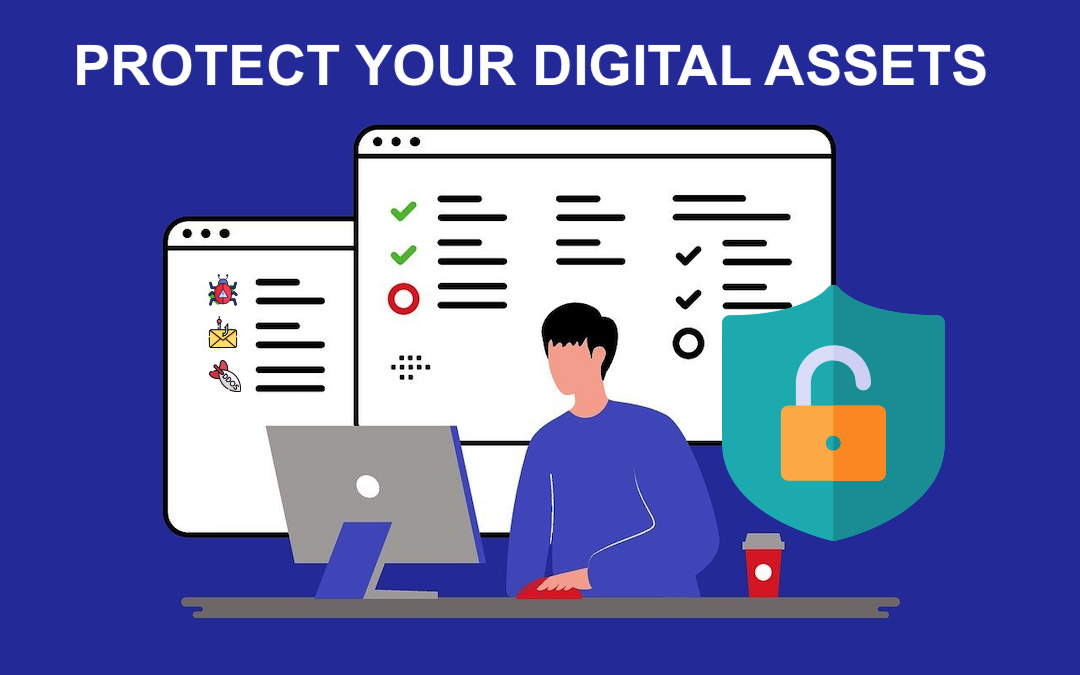
The proliferation of technology has transformed how we live, work, and interact. While this technological evolution has ushered in an era of unprecedented convenience and connectivity, it has also introduced significant risks to our digital assets. Cybersecurity, the practice of protecting systems, networks, and programs from digital attacks, has become a critical field in safeguarding these assets from ever-evolving threats.
The Importance of Cybersecurity
Digital assets encompass a wide range of items, from personal data and intellectual property to financial records and sensitive business information. As these assets become increasingly digitized, they also become more vulnerable to cyber threats. Cybersecurity is essential because it helps protect these assets from unauthorized access, theft, and damage. The consequences of inadequate cybersecurity measures can be devastating, including financial loss, reputational damage, legal repercussions, and operational disruptions.
AI is playing a major role now in any department. AI itself cannot be granted intellectual property rights, but the humans who create and operate AI tools can be eligible for such rights. An attorney specializing in AI and Web3 law can guide creators as well as IP licensees.
Common Cyber Threats
Several common cyber threats pose significant risks to digital assets:
- Malware: Malicious software, or malware, includes viruses, worms, ransomware, and spyware. These programs are designed to infiltrate systems, steal data, or cause damage. Ransomware, for instance, encrypts a victim's files and demands payment for the decryption key, often crippling businesses until the ransom is paid.
- Phishing: Phishing attacks involve tricking individuals into revealing sensitive information, such as passwords or credit card numbers, by pretending to be a trustworthy entity. These attacks often occur through deceptive emails or websites.
- Denial of Service (DoS) Attacks: DoS attacks overwhelm a system, network, or website with a flood of traffic, rendering it unusable. These attacks can be financially damaging and disrupt operations for extended periods.
- Man-in-the-Middle (MitM) Attacks: In MitM attacks, cybercriminals intercept and potentially alter the communication between two parties without their knowledge. This can lead to the theft of sensitive information or unauthorized transactions.
- SQL Injection: This attack involves inserting malicious code into a SQL query, allowing attackers to manipulate databases and gain access to unauthorized data.
Strategies for Protecting Digital Assets
To mitigate these threats and protect digital assets, individuals and organizations must implement comprehensive cybersecurity strategies. These strategies should encompass the following elements:
- Education and Awareness: One of the most effective ways to combat cyber threats is through education and awareness. Training employees and individuals on recognizing phishing attempts, using strong passwords, and understanding safe online practices can significantly reduce the risk of cyberattacks.
- Access Controls: Implementing strict access controls ensures that only authorized individuals can access sensitive data and systems. This includes using multi-factor authentication (MFA), role-based access controls (RBAC), and regularly reviewing and updating permissions.
- Regular Updates and Patch Management: Cybercriminals often exploit vulnerabilities in software and systems. Regularly updating software, operating systems, and applications ensures that these vulnerabilities are patched, reducing the risk of exploitation.
- Encryption: Encrypting sensitive data, both at rest and in transit, ensures that even if data is intercepted or accessed without authorization, it remains unreadable and unusable to cybercriminals.
- Firewalls and Antivirus Software: Firewalls act as barriers between trusted and untrusted networks, filtering incoming and outgoing traffic based on predetermined security rules. Antivirus software detects and removes malicious software, providing an additional layer of protection against malware.
- Incident Response Plan: Developing and regularly testing an incident response plan prepares organizations to respond quickly and effectively to cyber incidents. This plan should outline the steps during a breach, including communication protocols, containment measures, and recovery procedures.
- Regular Backups: Regularly backing up data ensures that it can be restored in the event of a cyber incident, such as a ransomware attack. These backups should be stored securely and tested periodically to ensure their integrity.
The Role of Government and Legislation
Governments and regulatory bodies play a crucial role in enhancing cybersecurity and protecting digital assets. By establishing and enforcing cybersecurity standards and regulations, they help ensure that organizations adhere to best practices and implement necessary security measures. For example, the General Data Protection Regulation (GDPR) in Europe sets stringent requirements for data protection and privacy, with significant penalties for non-compliance.
The Future of Cybersecurity
As technology continues to advance, so too will the methods and sophistication of cyber threats. Emerging technologies such as artificial intelligence (AI) and the Internet of Things (IoT) present new challenges and opportunities for cybersecurity. AI can be leveraged to enhance threat detection and response capabilities, but it can also be used by cybercriminals to develop more advanced and targeted attacks.
Conclusion
Cybersecurity is an essential aspect of protecting digital assets in an increasingly digital world. By understanding common cyber threats and implementing robust security measures, individuals and organizations can safeguard their sensitive information and mitigate the risks posed by cyberattacks. As the digital landscape continues to evolve, staying informed and vigilant will be crucial in maintaining the security and integrity of our digital assets.
Share this post
Leave a comment
All comments are moderated. Spammy and bot submitted comments are deleted. Please submit the comments that are helpful to others, and we'll approve your comments. A comment that includes outbound link will only be approved if the content is relevant to the topic, and has some value to our readers.

Comments (0)
No comment